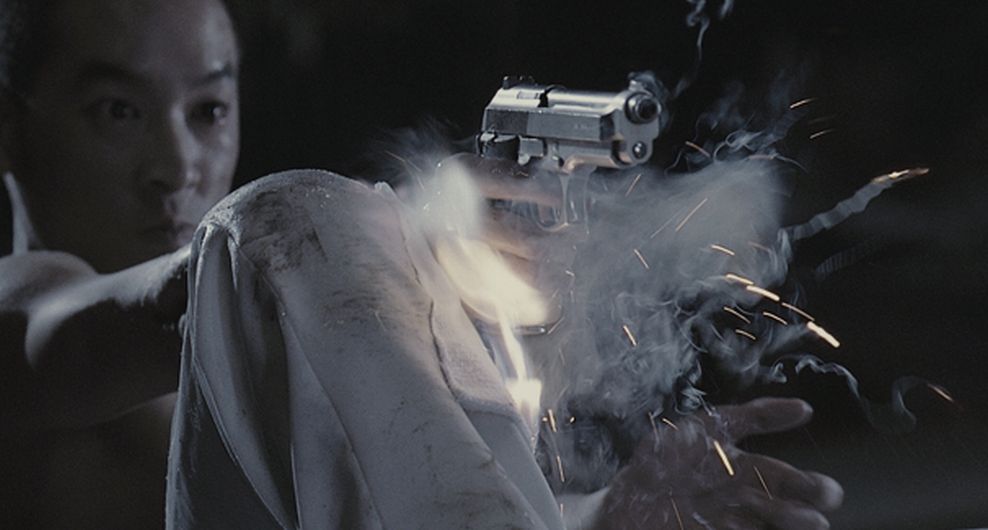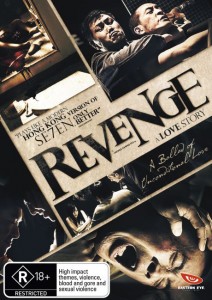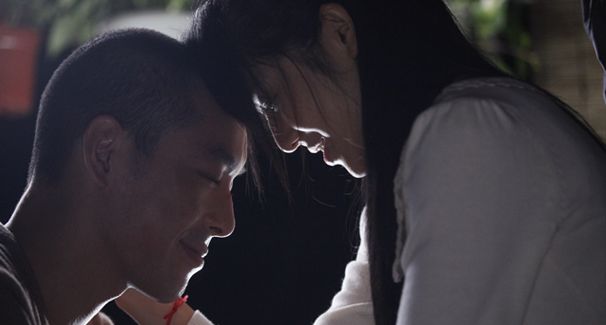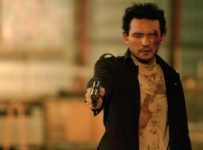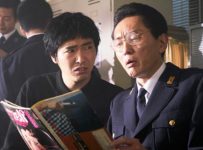Ching-Po Wong returns with a fragmented and rewarding tale of hatred.
[stextbox id=”grey” caption=”Disc Specifications” float=”true” align=”right” width=”220″]
Director: Ching-Po Wong
Writer (s): Ching-Po Wong, Lai-yin Leung, Juno Mak
Runtime: 91 minutes
Country: Hong Kong
Audio: Cantonese Dolby 5.1, DTS 5.1
Subtitles: English
Extras: Making Of, Theatrical Trailer
Distributor: Madman
Rating: Highly Recommended (★★★★) (?)
[/stextbox]
Described as dark, brooding, and extreme, Revenge: A Love Story is all of these. It is also exciting, at times horrific, and captivating. Identified as a horror story, this is a genre crossing film like no other. Part love story, there are elements of horror, along with thriller, action and drama. This is the result of what happens when a group of dedicated film makers gather to produce an experience for the film lover that will leave an emotional mark long after the lights have come on. This is not a film about forgiveness, as the title so rightly lets us know this is a film about Revenge.
Revenge: A Love Story is about Kit (Juno Mak) and Wing (Sola Aoi). Set in an isolated village in the New Territories of Hong Kong, a serial killer is on the loose. In this isolated environment we are introduced to two alienated people who meet and fall in love. With total dedication to each other, Kit is a slow-witted, quiet bun salesman, and Wing is a mentally challenged school girl. Wing lives with her grandmother who disapproves of Kit’s advances. Kit continues the pursuit of Wing, and eventually wins favour with Wings grandmother. As their love for each other grows, tragedy strikes. Into their life comes Jeff (Shin-Hou Chin), and an unidentified local drunkard (Lau Wing). With their arrival, and the actions they take, they make the narrative of Revenge: A Love Story continue to its violent conclusion
The world in which Ching-Po Wong sets his work is a brutal, dark, and horrifying place. There have been comparisons to David Finchers’ Seven. This is a good starting point, and it is even used in the promotion of the film, but there is one important point to be made. Unlike David Fincher’s work, Wong leaves the horror on the screen. Revenge: A Love Story is a film full of violence, blood, gore and very graphic details. Whether this makes it the better film than Seven is debatable, but it certainly turns up the tension.
The film definitely belongs to Juno Mak. A former boy band member with a controversial past, Mak co-wrote the screenplay, was originator of the story, and stars in the film as Kit. A demanding and physical role, Juno Mak is certainly up to the task and is the centre of attention in every scene that he has a part in. Sola Aio, who plays Wing with all the innocence the role calls for, is a Japanese adult entertainment actress in her film acting debut. Interestingly, Sola Aio does not speak Cantonese. She came to be involved with the project because director Wong had trouble casting the role as a result of nudity. After constant refusals in the Hong Kong film industry, he looked to Japan to find an actress that would fulfil the needs of the role. To her credit and dedication to the project, Sola Aio learned her Cantonese lines, and she is excellent. Adding to this mix are stand-out performances by Shin-Hou Chin, and Lau Wing, and a great cast of veteran character actors.
Revenge: A Love Story is shot in a visual style that is complementary to the gritty narrative being told. Washed-out colours, dark lighting, and close-ups give a full understanding of just the type of world we have entered. Low floor tracking shots that are framed to reveal the horrors that are waiting just around the corner of darkly lit rooms. Framed point of view scenes that force you to keep your attention on more than one participant in a confined space. Brightly lit locations that in a moment become terribly horrific environments. All these give a clear understanding to the viewer just where they fit in with this experience.
Described by Juno Mak as a story of hatred, Revenge: A Love Story is a fragmented piece of filmmaking, but in a very rewarding way. Several instances as a result of the editing employed, our knowledge, understanding, and even sympathies actively change. Impressive, because with the acceptance of the traditional shock ending in classical cinema narrative, not many filmmakers actively use this tool .It takes a special talent of which Wong obviously possesses, and he most definitely uses to the viewer’s reward. There is some clear influence by Quentin Tarantino, such as the use of title cards with a chapter name for each section of the film. Wong takes a different approach in using this device to play with our emotions: a character we sympathise with in the film’s opening chapter is a villain two or three chapters later.
Once again, it is an absolute pleasure to come across a gem from outside the Hollywood system. I have no doubt that at some point this will get the studio treatment. As with The Departed, there is no way that it would be as enjoyable as the original. What makes this film so good is that you have a group of individuals that come together, dedicated to telling a story. They have all committed their talents to producing a film that is not only exciting and very involving to watch unfold, but is a gem to interact with and is way out of Hollywood’s league. It would definitely not be made in today’s mainstream system, and that’s something to be excited about.
The Disc
Madman has provided a good 2:35:1 ratio transfer of the film. The film is largely set in dark, and dense environments such as interview rooms, confined apartments, and dark exteriors, so this is more of the filmmaker’s conscious approach and the disc does not suffer for it, as the film looks great. While some of the CGI is a bit dicey it does not take away from the enjoyment of the film. There are several extras that are very enjoyable, interviews with the actors, stories on how the stunts were performed, and revelation’s on just why some artistic decisions were made. This was reviewed on a DVD, would love to see what they would do with a Blu ray release.

